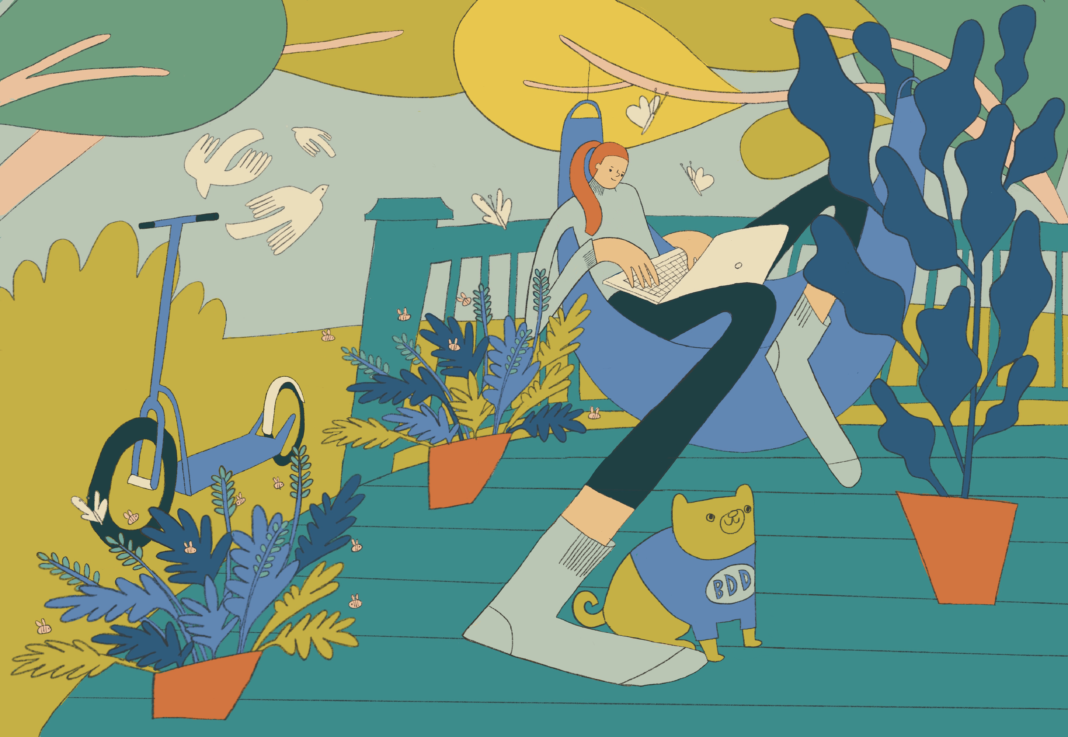Dear Dot,
Coffee, how do I choose? It says locally brewed but does that mean it’s better for the environment? What do all those labels mean? What should I look for?
–Curious Coffee Connoisseur
Dear Triple C,
I, too, am on a quest to reconcile my love of caffeine with my love for this planet. So over my sixth cup of coffee, I made a jittery call to Kim Elena Ionescu, Chief Sustainability and Knowledge Development Officer at Specialty Coffee Association, asking her to help us better understand the glut of sustainable labels — bird-friendly, shade-grown, organic, up-late-studying-friendly, etc — and figure out what actually has a positive impact.
First, let’s talk about which labels we’re sure are making a difference. According to Ionescu, consumers should prioritize three certifications: Fair Trade, Organic, and Rainforest Alliance. The first tackles the social side of the bean, ensuring fair labor practices. Organic certification safeguards not only the health of the crops but that of the soil. And, while being grown in shade is not a requirement for this certification, organic farmers often rely on shade to grow their coffee, meaning they are rarely complicit in deforestation. Lastly, Rainforest Alliance has standards for both labor practices and forest conservation.
While there are many other labels that might effectively ensure sustainable practices, Ionescu recommends starting with these three because they have been around for a long time and are third-party certified, which means they’re assessed by an outside governing body rather than the industry itself. “All of those have a really high degree of credibility,” Ionescu says.
When it comes to limiting your carbon footprint, buying locally roasted beans will not have much of an impact, according to Ionescu. “There’s a much greater impact in the roasting process of the coffee itself and in the brewing of the coffee,” Ionescu says. “To heat the water in order to brew a cup of coffee requires proportionally a lot more energy than shipping a pound of coffee overseas on a container ship.” The benefits of buying locally roasted coffee, however, are to support your local economy and enjoy fresher beans (although the difference in freshness might be negligible).
The most effective way to limit the carbon footprint of your coffee is to focus on your own brewing methods, Ionescu suggests. She advises coffee drinkers to only boil as much water as they are going to use and to avoid leaving coffee machines on longer than necessary. Among Ionescu’s recommended certifications, “Organic” is the one that is going to address carbon footprint specifically. This is because it prevents the use of certain fertilizers, pesticides, and herbicides that are often derived from fossil fuels.
There are other simple steps you can take to green your daily beans. For one, opting for oat milk is a more sustainable choice than dairy or even almond milk. If pour-over is your method of choice, you can use a reusable filter in place of paper ones. Dot’s personal favorite is cold-brew coffee — it both packs a punch and is refreshing — and it turns out to be the most energy-efficient brewing method, using no electricity.
If you’ve checked all these boxes, there’s still more you could do. Take the question of those locally roasted beans, for example. The roasting stage currently contributes 15% of the overall carbon footprint of the coffee industry. But this is largely due to the machinery used, not whether the beans are locally roasted or not. There are some newer roasting technologies that are more fuel efficient or even totally electric, such as Bellwether Coffee’s zero-emissions roaster. This isn’t the type of thing that normally shows up on coffee bags, so if it is really important to you to address this, you may need to do some further digging on specific coffee brands’ websites to see if they mention their roasting machinery.
You just might need a significant jolt of caffeine to wade through the considerable jargon associated with your cuppa joe. “This gets me to this unappetizing but unavoidable part of the sustainability guarantee, which is that there is some work that needs to be done by the individual consumer if this is of paramount importance to them,” Ionescu says.
For now, though, these few simple steps can ensure that your caffeine comes with a conscience.
Brewingly,
Dot

